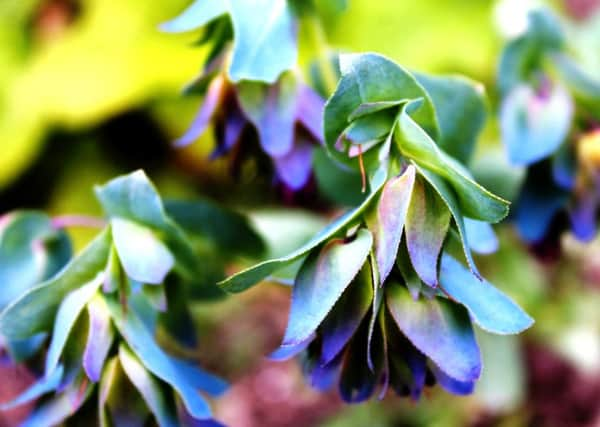Gardening: Rather rakish


There are trends in gardening just as there are trends in clothes. The rise and fall and rise again of the herbaceous border is on a par with stack heels and ripped denims. But whereas you can bin a shirt one day and be wearing a “fashionable” replacement the next, it takes a bit more time and usually a lot more effort to start a trend in the garden.
But it happens; sometimes, the result is outrageous and an insult to horticulture, other times it works and here’s something new to admire.
Advertisement
Hide AdAdvertisement
Hide AdThus it is with Honeywort, which also goes by the name Cerinthe majo “Purpurascens” and which has suddenly become one of “the” plants for every garden. Grow it and you are “in”; ignore it at your peril.
But it’s impossible to ignore it. This is an unusual but stunning hardy annual that has so much to offer both the gardener and wildlife.
It has oval, fleshy blue-green leaves, mottled with white, and rich purple-blue, tubular flowers held inside sea blue bracts. Bees love it.
For early blooms, sow seed in pots indoors in early spring. Alternatively sow outdoors in April. Once introduced into the garden, self-sown seedlings will mean that it rarely disappears and seedlings can be lifted and repositioned when and where the gardener wants them to grow and show.
Advertisement
Hide AdAdvertisement
Hide AdHoneywort is one of those lovely plants that are so easy to grow that just about anyone should be successful with a packet of seed; otherwise, seedlings can be bought for spring planting (although at this time of year you’ll have to wait a while until they are ready).
Hardy annuals like Honeywort can normally withstand a touch of frost and can be sown/planted straight into the ground in the autumn.
They will keep through the winter without protection, although in colder areas it may pay to cover seedlings or keep them in a cold frame or unheated greenhouse.
Whichever method you choose, make sure the site chosen to accommodate Honeywort is as sunny as possible and the soil is well-drained. Cerinthe majo “Purpurascens” actually prefers a light, chalky soil. If your soil is too heavy or just unsuitable, try growing plants in containers.
Apart from that quirk, it’s a hardy little beast and will easily grow to a height of 60cm, spread the same distance and flower for weeks from June till the end of September.